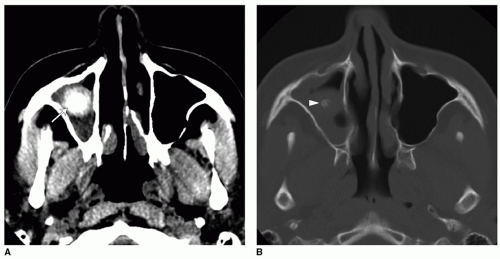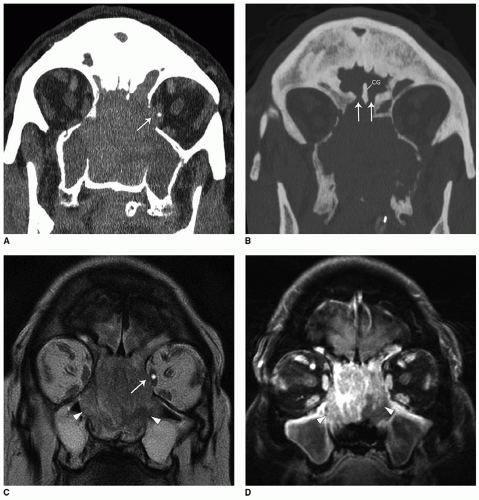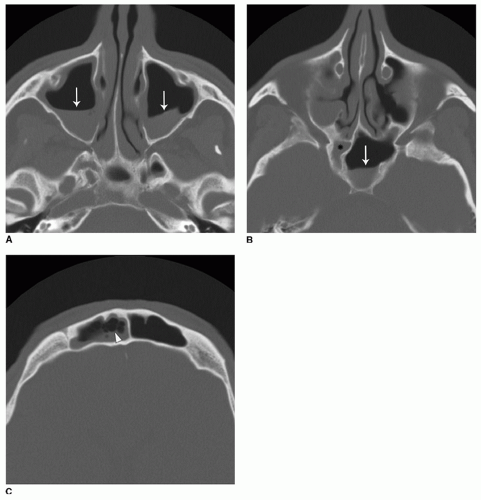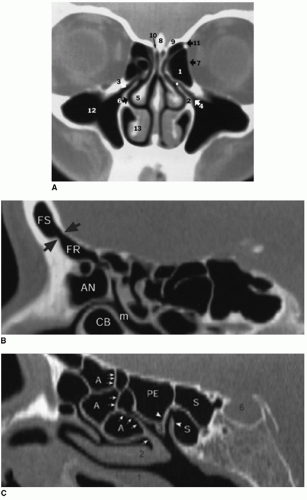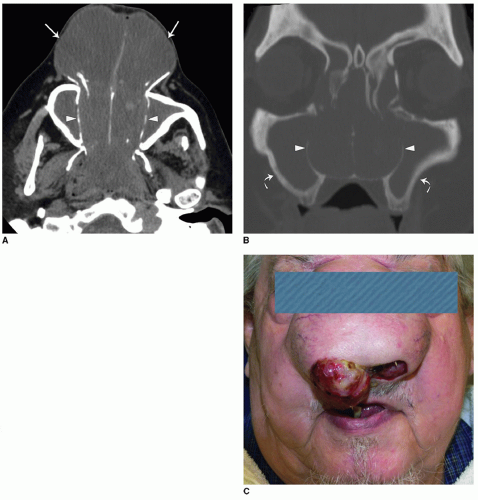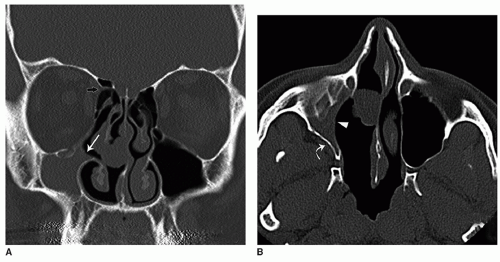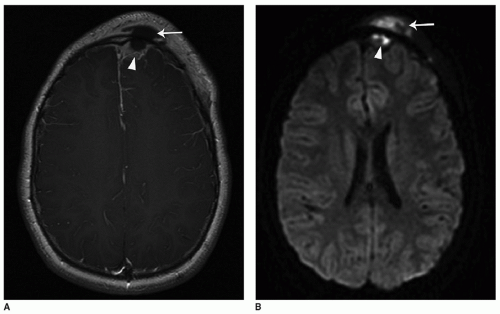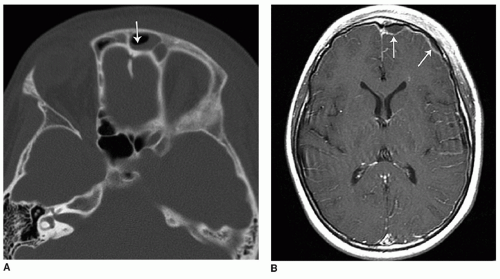Other sequences, such those as with fat-saturation or suppression, can help to confirm fat content and make enhancement more conspicuous when the high signal of fat is nulled.
TABLE 27.1 COMPARISON OF CT AND MRI PRINCIPLES, PROTOCOLS, INDICATIONS AND POTENTIAL RISKS | |||||||||||||||
|---|---|---|---|---|---|---|---|---|---|---|---|---|---|---|---|
|
cause of acute maxillary sinusitis is odontogenic infection. This should be suspected if the CT findings of sinusitis are severe in the presence of an oroantral fistula, periodontal lucency (abscess), or a tooth root projecting into the maxillary sinus (Fig. 27.4) (5). The typical finding in chronic rhinosinusitis is significant mucosal thickening or opacification in a nonexpanded sinus, often with ostial obstruction. A characteristic, but less common sign of chronic rhinosinusitis is sclerosis and thickening of bony sinus walls, particularly seen in the sphenoid and maxillary sinuses (Fig. 27.5). Chronic rhinosinusitis may also be associated with high-density opacification that often represents viscous or desiccated secretions, but can also be a sign of coexisting allergic fungal rhinosinusitis or fungus ball.
 Figure 27.5 Chronic sinusitis. A: Axial and B: sagittal CT images show opacification of the left sphenoid sinus (asterisks) with bony sclerosis and wall thickening (arrows). |
collections of fluid (serous retention cysts) or collections from an obstructed seromucinous gland (mucous retention cysts). They most frequently occur in the maxillary antrum and appear as smooth, outwardly convex soft tissue density masses. On CT, it is difficult to differentiate a cyst from a polyp since both have soft tissue density. On MRI, a cyst does not enhance except for its mucosal surface. A polyp represents hyperplastic mucosa and will solidly enhance.
intracranial contents. Meningoceles and encephaloceles appear on CT as a soft tissue mass abutting the skull base with focal bony dehiscence. The diagnosis is best confirmed with MRI. Meningoceles show T2 hyperintensity due to the presence of cerebrospinal fluid (CSF). Encephaloceles are characterized by a soft tissue mass with signal isointense to gray matter and contiguity to intracranial parenchyma (Fig. 27.14).
 Figure 27.13 Bony destruction from sinonasal sarcoma. A:
Get Clinical Tree app for offline access
Stay updated, free articles. Join our Telegram channel
Full access? Get Clinical Tree


|
